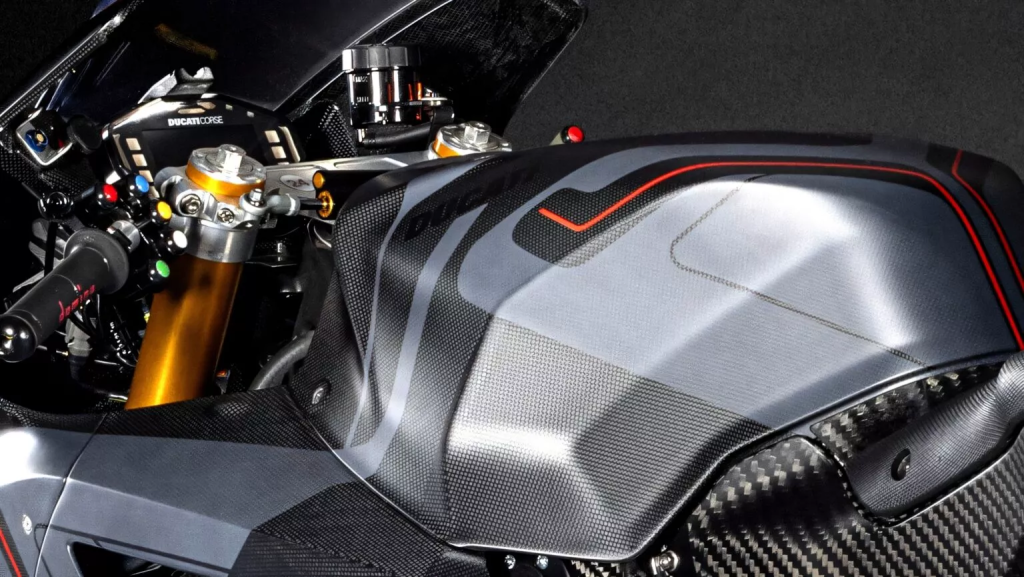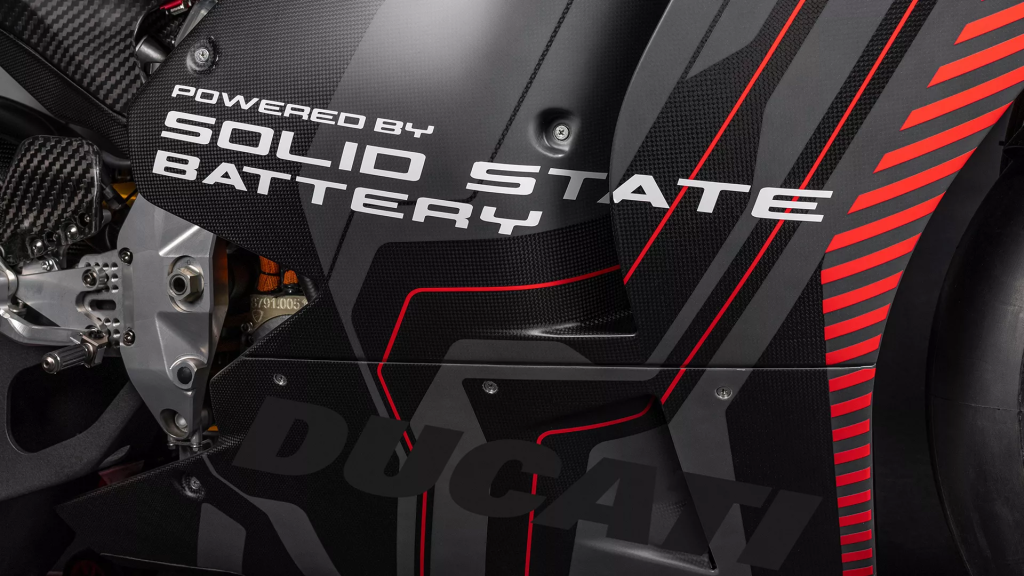Ducati debuts a V21L MotoE prototype using QuantumScape solid-state cells at IAA Mobility, testing high-density batteries that could advance both electric motorcycles and future Volkswagen EVs.

Subscribe to our Telegram channel for instant updates!
Electric motorcycles may lag behind cars in mainstream adoption, but battery research continues to accelerate. At the IAA Mobility event in Germany, Ducati unveiled a specially equipped prototype superbike fitted with solid-state battery cells. This technology could reshape not only motorcycling but the entire automotive industry.
A Rolling Laboratory
The machine on display is an updated version of Ducati’s V21L MotoE race bike, now housing 980 QuantumScape QSE-5 solid-state cells. These cells use a lithium metal anode and a ceramic separator, a configuration that promises higher energy density, faster charging times, improved safety, and longer battery life compared to conventional lithium-ion packs.
Ducati did not disclose specific figures for weight, capacity, or range, but engineers say the aim is clear: achieve performance that rivals internal-combustion racing bikes while reducing the bulk that typically hampers electric motorcycles. The prototype will continue track testing in the coming months to refine the technology.


Ties to Volkswagen and QuantumScape
Ducati is owned by the Volkswagen Group, which has been investing in solid-state research for over a decade through its partnership with California-based QuantumScape. The Ducati project serves as a high-performance test platform, generating data that could inform future VW electric cars as well as production motorcycles.
Claudio Domenicali, Ducati’s chief executive, noted that Ducati’s history of racing innovation makes it an ideal proving ground for experimental powertrains.
Implications for Two and Four Wheels
While Ducati remains the sole supplier of bikes for the MotoE World Championship, its electric racers still struggle to match the range and weight of their gasoline counterparts. Solid-state cells could close that gap, potentially enabling lighter, longer-range motorcycles and faster charging times, advantages that would also benefit passenger cars.
The V21L prototype now stands as a key testbed for this next-generation energy storage. Whether the technology reaches Ducati showrooms first or finds a home in VW’s future EVs, the experiment highlights how motorcycle racing continues to drive breakthroughs in electric mobility.





























Facebook
Instagram
X (Twitter)
YouTube
LinkedIn
RSS